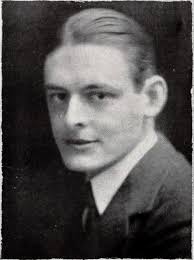In this post, notes of “Unit 1A: (ii) The Hollow Men by T.S. Eliot” from “DSC- 13: Twentieth Century Poetry & Drama” are given which is helpful for the students doing graduation this year.

The Hollow Men
Overview
The Hollow Men Summary
Full Text of Poem: the hollow men
“The Hollow Men” was published in 1925, a few years after The Waste Land, and is often seen as one of T.S. Eliot’s most haunting poems.
It shows the emptiness and lack of spirit in modern life after World War I. The “hollow men” represent people who feel lost, lacking purpose or identity.
They are stuck in a space between being alive and dead, unable to connect with each other or find meaning.
The poem starts by describing the hollow men as “stuffed” figures who are empty inside. As it goes on, the speaker talks about the failure of human will, lost ideals, and a broken society.
The hollow men live in a “world of paper” that offers no real substance or happiness. In the end, they are trapped in a “dead land,” symbolizing their spiritual emptiness and lack of hope.
the hollow men theme
- Spiritual Emptiness: The main theme is the lack of spiritual fulfillment. The hollow men feel disconnected from any greater purpose, showing a sense of despair.
- Poor Communication: The hollow men struggle to connect with each other, reflecting a sense of isolation and broken relationships in the modern world.
- Fear of Death: The hollow men are stuck between life and death, showing a fear of truly living or dying. Their worries about death are present throughout the poem.
- Failure to Achieve: The hollow men symbolize the failure of human potential. They cannot pursue or even want meaningful goals, trapped in fear and indecision.
- Fragmented Modern Life: The poem shows a broken world. The hollow men’s inability to act represents the disintegration of society and spirituality.
the hollow men Literary Devices
- Repetition: Repeated phrases like “We are the hollow men” create a sense of stillness and inevitability, contributing to a haunting tone.
- Allusion: The poem references other works, like the Christian Lord’s Prayer, suggesting the hollow men’s unfulfilled desire for spiritual salvation.
- Symbolism: The hollow men symbolize emptiness and a crisis of existence. Their “stuffed” bodies show their loss of identity. The “dream kingdom” and “dead land” symbolize moral decay.
- Imagery: The poem uses stark imagery to convey emptiness. Descriptions of “stuffed” and “dry” bodies suggest lifelessness, while the setting of “dead trees” emphasizes a lack of meaning.
the hollow men analysis
Structure and Form:
The poem has five sections with a loose structure. The first section introduces the hollow men and their emptiness. The second discusses fear and hesitation, especially regarding death.
The final sections reflect on the failure of spiritual redemption, ending with the line “This is the way the world ends / Not with a bang but a whimper.“
The irregular form mirrors the empty lives of the hollow men. There is no clear narrative, showing their aimlessness. The lack of rhyme and meter highlights their emptiness.
Imagery and Symbolism:
- The Hollow Men: They symbolize people who have lost spiritual and moral direction. Being “stuffed” yet empty captures their spiritual void.
- The “Dead Land” and “Death’s Dream Kingdom”: These images suggest a place of spiritual death, reflecting the hollow men’s crisis.
- The Eyes: The hollow men’s “stuffed” eyes symbolize their inability to see the world clearly, both literally and figuratively.
- “A World of Paper”: This suggests a fragile world. Paper can be easily torn, just like the hollow men’s attempts at fulfillment.
Themes of Despair and Disillusionment:
The poem’s bleak tone reflects the despair of the hollow men. Their lack of purpose and action suggests deep disillusionment with life.
They have lost faith in the possibility of redemption, ending with the idea that the world ends quietly, not dramatically. This resignation reflects a world that has lost its vitality.
Prufrock, a character from Eliot’s earlier poem, also feels indecisive and alone, but the hollow men represent a deeper spiritual failure. Their despair reflects the disillusionment of society after World War I.
Critical Perspectives
Modernist Elements:
The Hollow Men is a key modernist work, showing several traits:
- Fragmentation: The poem’s disjointed nature reflects the breakdown of social and spiritual systems in the modern world.
- Existential Despair: The hollow men embody the theme of existential despair, facing a void after losing traditional values.
- Alienation: The hollow men feel isolated from each other and from any higher purpose, reflecting the breakdown of relationships.
Reception and Impact:
When The Hollow Men was published, it received both praise and confusion. Its dense symbolism and dark outlook captured the cultural mood of the time.
The poem became a symbol of the emptiness felt in the post-war period and has continued to be studied as a significant modernist text. Its famous closing lines express the futility of modern life.
Scholarly Interpretations:
Scholars have analyzed The Hollow Men in different ways:
- Psychological Readings: Some see the hollow men as suffering from psychological paralysis, representing the struggle with modern life.
- Religious Interpretations: The poem’s spiritual emptiness is often viewed through a religious lens. Critics see the hollow men as unable to reach redemption or connection with the divine.
- Political and Social Readings: Some view the poem as a critique of the collapse of social values after World War I, with the hollow men symbolizing this moral and spiritual emptiness.



